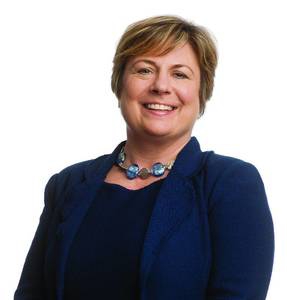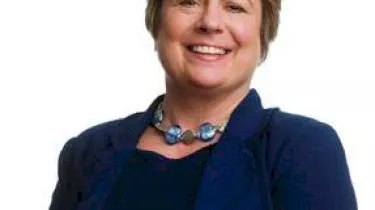Invest
Why investors should prioritise diversification over yield
With interest rates at historic lows and an outlook of constrained growth, investors have been on the hunt for yield en masse. However, it should not be their highest priority.
Why investors should prioritise diversification over yield
With interest rates at historic lows and an outlook of constrained growth, investors have been on the hunt for yield en masse. However, it should not be their highest priority.

In this uncertain environment of low growth and negative interest rates, investors should resist the urge to chase yield and make sure they’re diversified, including a cash cushion.
The unprecedented central bank intervention has created something the economic textbooks never prepared us for – negative interest rates.
In this brave new world, I believe it’s important for investors to avoid stretching too far for yield, while owning a little bit of everything.
Negative interest rates should not be seen as a positive for global financial markets. In fact, negative rates are harmful over the longer term, and it’s becoming more apparent that the markets do not like it.

No one knows when rates will rise. It could take years. The Federal Reserve could keep them on hold until after the election. However, bond markets are currently priced for perfection because of monetary policy and quantitative easing (QE). Investors aren’t ready for higher rates and when the unexpected happens, that’s generally when we see volatility and big price surprises.
What does all this mean from an investment standpoint? First, investors have to be extremely careful about chasing yield today because there just isn’t a lot of value in popular income-producing segments of the market. Second, I think now is a great time to own a little bit of everything, including cash. Keeping some dry powder makes sense at this time.
There are pockets of opportunity in corporate bonds, floating-rate bank loans and large-cap equities with sustainable dividend yields and solid cash flows, for example. Conversely, the risk-reward in developed-market government bonds is skewed to the downside.
We are definitely in unchartered territory, and I believe it’s unsustainable. Looking at 10-year government bond yields in developed markets, it’s remarkable that the US is viewed as the high yielder at less than 1.6 per cent.

At this point, central banks seem to be pushing on a string with additional monetary policy measures. In Japan, Prime Minister Shinzo Abe appears to realise this. He recently promised further fiscal stimulus to complement incredibly loose monetary policy from the Bank of Japan. In this environment of low growth, monetary policy is not enough. It needs to be paired with government action and public spending.
The lack of growth is driving the US presidential election and politics around the world. No matter who Americans send to the White House, there will be a mandate to begin fiscal spending. Therefore, I believe fiscal spending will pick up in the US, while Canada is already doing it and both the International Monetary Fund and the Organization for Economic Cooperation and Development are supportive of the idea.
Low rates and income are key reasons why consumer spending hasn’t picked up. Spending has to shift to the public sector and private spending will hopefully follow.
Kathleen C. Gaffney, co-director of diversified fixed income, Eaton Vance

Stock market
6K Additive secures A$48 million through initial public offering on the Australian Stock Exchange
6K Additive, a prominent player in the advanced metal powders and alloy additions market, has made a significant stride by successfully completing its Initial Public Offering (IPO) on the Australian ...Read more

Stock market
Institutional investors increase stock allocations to 18-year high amid cautious market shifts
In a recent development, State Street Markets unveiled the findings of its latest State Street Institutional Investor Indicators, revealing intriguing shifts in institutional investor behaviourRead more

Stock market
FOREX.com launches in Australia to empower self-directed traders
StoneX Group Inc. (NASDAQ: SNEX) has announced the Australian launch of FOREX.com, expanding access for self-directed traders to a global suite of Contracts for Difference (CFD) products across ...Read more

Stock market
Westpac and CMC Markets strengthen partnership to enhance online trading services
In a significant move that underscores the evolving landscape of online trading in Australia, CMC Markets Stockbroking has been chosen as the preferred vendor by Westpac Banking Corporation to extend ...Read more

Stock market
Portfolio reviews as an operating discipline: turning volatility into a competitive edge
In a higher-rate, higher-volatility world, portfolio reviews are no longer an annual hygiene task; they’re a core operating rhythm that protects cash flow, unlocks tax alpha, and sharpens risk ...Read more

Stock market
Fee war on the ASX: Global X’s A300 turns up the heat on core Aussie equity ETFs
Global X has lobbed a 0.04% management fee into Australia’s core equity sandbox, launching the Australia 300 ETF (A300) to take on entrenched giants. Read more

Stock market
Challenger IM shakes up the ASX with private credit note and a side of risk
Challenger Investment Management has taken private credit mainstream with an ASX-listed note structure—LiFTs—that secured roughly $100 million in cornerstone commitments within a day of launch. Read more

Stock market
International stocks: Diversifying your portfolio beyond Australia
In an increasingly globalized market, Australian investors have the opportunity to enhance their investment portfolio by incorporating international stocks. Diversifying your investments globally can ...Read more

Stock market
6K Additive secures A$48 million through initial public offering on the Australian Stock Exchange
6K Additive, a prominent player in the advanced metal powders and alloy additions market, has made a significant stride by successfully completing its Initial Public Offering (IPO) on the Australian ...Read more

Stock market
Institutional investors increase stock allocations to 18-year high amid cautious market shifts
In a recent development, State Street Markets unveiled the findings of its latest State Street Institutional Investor Indicators, revealing intriguing shifts in institutional investor behaviourRead more

Stock market
FOREX.com launches in Australia to empower self-directed traders
StoneX Group Inc. (NASDAQ: SNEX) has announced the Australian launch of FOREX.com, expanding access for self-directed traders to a global suite of Contracts for Difference (CFD) products across ...Read more

Stock market
Westpac and CMC Markets strengthen partnership to enhance online trading services
In a significant move that underscores the evolving landscape of online trading in Australia, CMC Markets Stockbroking has been chosen as the preferred vendor by Westpac Banking Corporation to extend ...Read more

Stock market
Portfolio reviews as an operating discipline: turning volatility into a competitive edge
In a higher-rate, higher-volatility world, portfolio reviews are no longer an annual hygiene task; they’re a core operating rhythm that protects cash flow, unlocks tax alpha, and sharpens risk ...Read more

Stock market
Fee war on the ASX: Global X’s A300 turns up the heat on core Aussie equity ETFs
Global X has lobbed a 0.04% management fee into Australia’s core equity sandbox, launching the Australia 300 ETF (A300) to take on entrenched giants. Read more

Stock market
Challenger IM shakes up the ASX with private credit note and a side of risk
Challenger Investment Management has taken private credit mainstream with an ASX-listed note structure—LiFTs—that secured roughly $100 million in cornerstone commitments within a day of launch. Read more

Stock market
International stocks: Diversifying your portfolio beyond Australia
In an increasingly globalized market, Australian investors have the opportunity to enhance their investment portfolio by incorporating international stocks. Diversifying your investments globally can ...Read more








